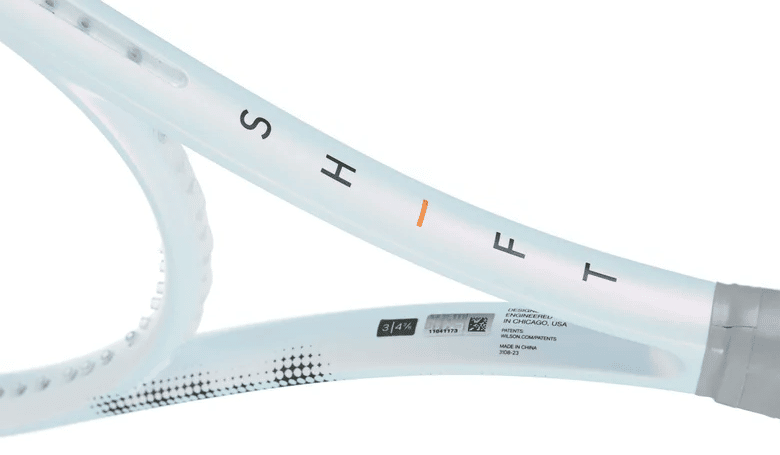Utilization
We have used the CST2 on a daily basis for many months in various situations – at home, in the shop, and during several tournaments. As already said, the page that interests most of the people approaching CST2 is the tension page. Once we set all the parameters in the first page, we must turn the selector in order to move to the desired screen. Now, we attach the piezoelectric microphone clip to the head of the racquet and then tap on the strings with the handle of a set off tool. Immediately, the tension in kg and in lb is shown. In addition, at the bottom, the vibration frequency and the percentage of accuracy of the measured data are also displayed. Moving to the ERT emulation page, we see the ERT emulation data but with decimals (that are actually not present in the ERT). In addition, one can read two different ERT emulation data, one for the middle and one associated to the top of the stringbed.
The values of these two pages are calculated by algorithms starting from the crucial data that is the vibration frequency (fourth page). Consequently, the more accurate the values entered on the first page, the more precise the data in kg/lb and ERT will be. On average, the values obtained are very close to those set in the machine. A little more “trouble” was experienced with hybrid stringbeds. The results are not always precise, but the several possible string combinations are really too many. However, compared to the first CST2 prototypes the results are definitely an improvement. Additionally there are many “variables” that can result in inconsistent data return. There are stringing machines that, at the same reference tension return firmer or softer stringbeds, (for this reason on the first page there is a correction factor called DKG…FK) stringers who lose more tension than others while stringing, or uncalibrated machines. As already mentioned, the incorrect setting of these parameters on the first page also contributes to inaccurate output values.
We have been using the CST2 for a long time now and the only datum we take into consideration in the end is the frequency, which is the most reliable. In fact, being the original value on which everything else is based, it is measured independently on the various parameters that we have to manually set. The range of data proposed by this datum is infinitely larger than the values expressed by the ERT, so as a stringer, I have the possibility to have much more specific and precise results on the quality of the stringing tested. Ultimately that’s what a stringer needs.
The kg/lb page can be useful with customers, to show them the tension detected on their rackets, to see whether or not to restring. In tournaments, in our opinion, it is not a usable page, as for each racquet we have to set all the parameters before checking the tension, and this is a time consuming task which is hardly possible during a tournament.
As already emphasized, the CST2 is a very complete tool, but a professional stringer will only use it to see if he has done a good job, by comparing the tension of some rackets. In the end he will opt (and we recommend doing so) to use the frequency over the other values.
Another big advantage, compared to the ERT 300, is the very high sensitivity and precision of the CST2. On the ERT 300, depending on the string where the ERT is “clipped” or depending on how and where the racquet is handled, there could be deviations of 1 or 2 points in the reading. With the CST2 this cannot happen. Once the clip is applied to the frame, the stringbed can be beaten at different points, but the result will always be the same. In addition, it is incredible how 1 point difference on the ERT is equivalent to about 10 points in the frequency domain (this might vary depending of the type of string tested). One can imagine for himself what level of precision can be achieved with CST2 to determine the quality of the job done.
One negative thing we noted was high battery drain that can be bypassed by connecting the CST2 to a power bank, although the CST cannot be turned off with the power bank connected.













